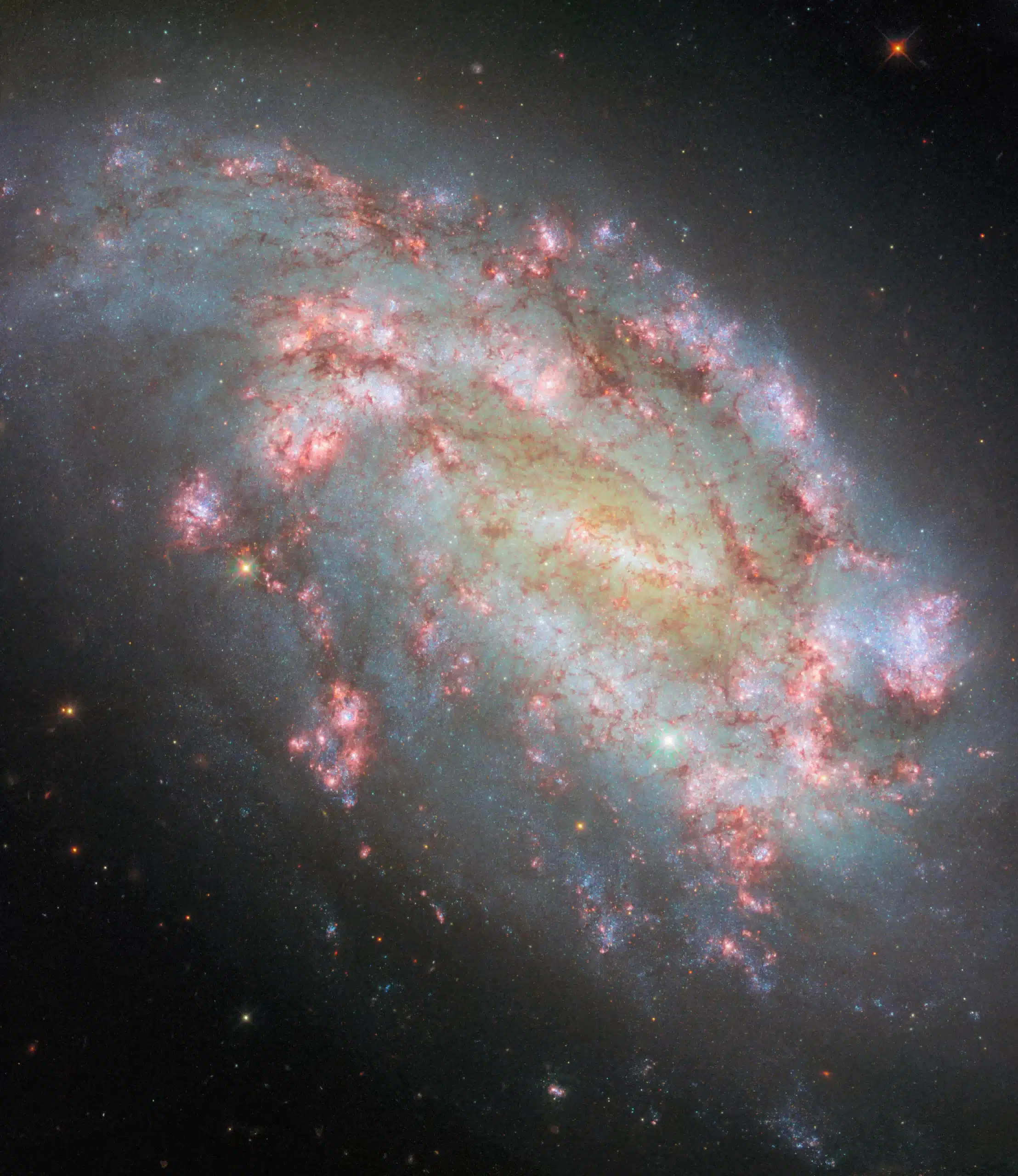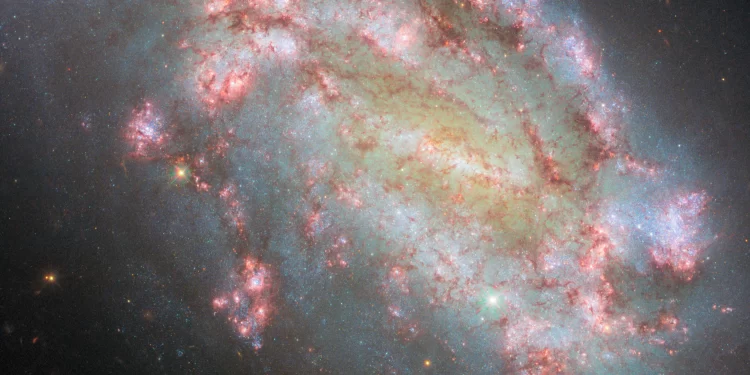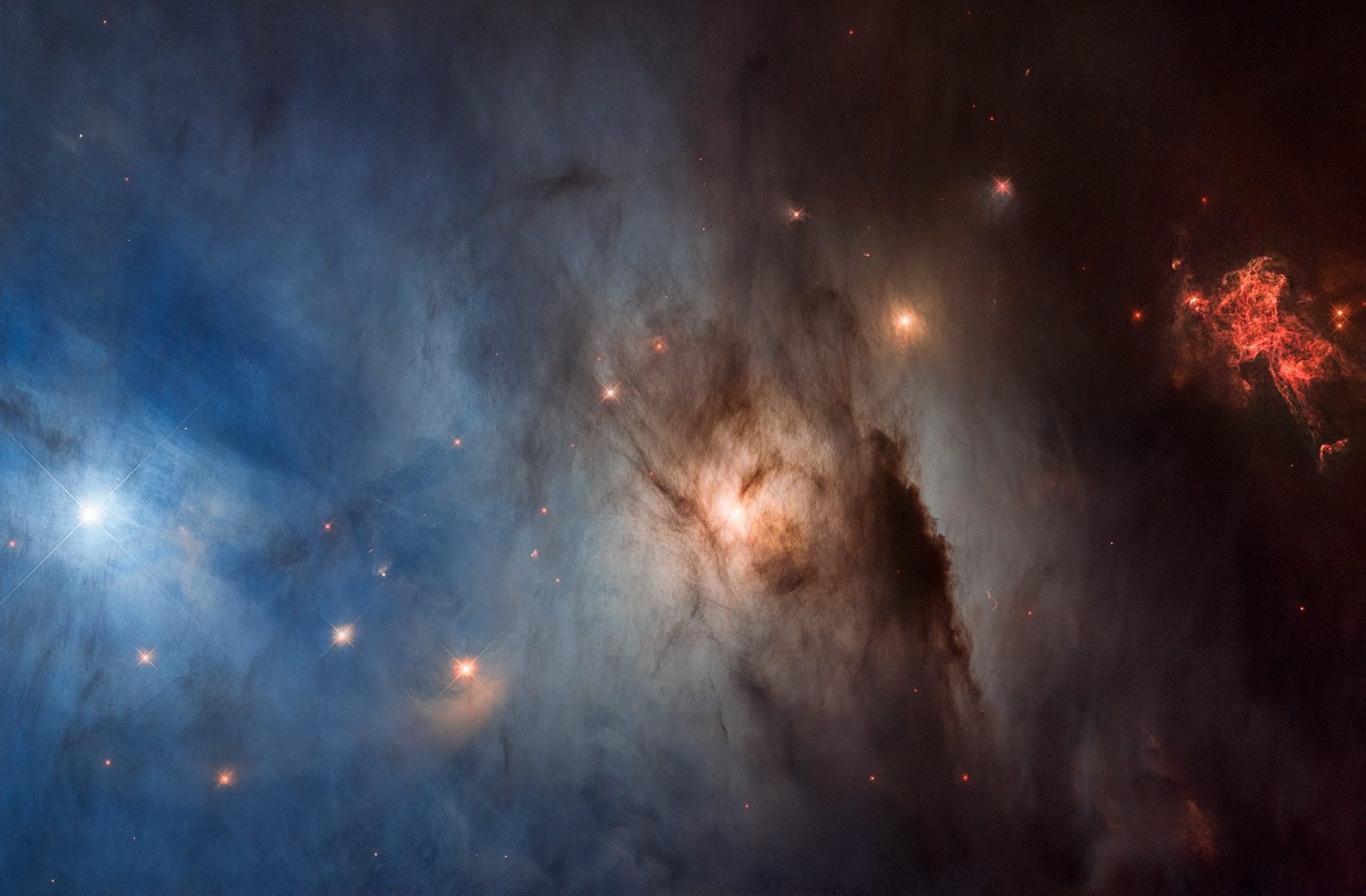The cosmic beauty of NGC 1559, a barred spiral galaxy located about 35 million light-years away in the constellation Reticulum, has once again been brought into sharp focus thanks to the NASA/ESA Hubble Space Telescope. This galaxy, featured in a breathtaking new image, offers more than just a visual spectacle—it unlocks a wealth of astrophysical insights.
This striking image isn’t just a snapshot; it’s a composite of ten separate images taken through Hubble’s filters, each isolating a specific wavelength. By capturing light across the ultraviolet, visible, and near-infrared spectrums, astronomers can study an array of phenomena within NGC 1559, revealing processes invisible to the naked eye.
One of the standout features in this image is the H-alpha emission, which glows at a wavelength of 656 nanometers—this specific emission comes from ionized hydrogen atoms. New stars are born within dense clouds of hydrogen gas. These young stars emit intense ultraviolet light, which ionizes the surrounding hydrogen, causing it to emit the characteristic H-alpha light.
In the case of NGC 1559, these H-alpha emissions, visible as bright red and pink patches, trace the regions of active star formation. By using Hubble’s filters to isolate H-alpha light, astronomers can pinpoint these H II regions—zones where new stars are forming in the galaxy’s spiral arms. These glowing patches provide crucial data on how stars are born, evolve, and shape their surroundings.
A Decade of Observations: Piecing Together NGC 1559’s Story

The stunning multiwavelength view of NGC 1559 isn’t the result of a single observation. Over a period spanning from 2009 to 2024, astronomers from various global institutions proposed different observing programs, each with a unique scientific goal. Some studied ionized gas and star formation, while others investigated the aftermath of a supernova or tracked variable stars to refine the calculation of the Hubble constant—a key parameter in measuring the expansion rate of the universe.
All the data collected from these observations is stored in the Hubble archive, where it’s freely accessible to researchers worldwide. This archive is a treasure trove not only for groundbreaking scientific discoveries but also for producing stunning images that captivate the public. The NGC 1559 image is a perfect example of how data collected over time can be combined to create a more complete picture of the universe.
The Future of NGC 1559 Studies: Hubble Meets James Webb
While Hubble continues to amaze with its observations, the next chapter in the study of NGC 1559 is being written by the NASA/ESA/CSA James Webb Space Telescope. With its ability to observe in the near- and mid-infrared spectrum, Webb is complementing Hubble’s work by providing new insights into regions of the galaxy previously obscured by dust and gas.
In February 2024, Webb captured an image of NGC 1559, revealing even more detail about its structure, star formation activity, and the intricate dance of gas and dust. Together, Hubble and Webb are unraveling the mysteries of galaxies like NGC 1559, offering a glimpse into the cosmic forces that shape the universe.
As Hubble’s and Webb’s observations continue, NGC 1559 will likely remain a focal point for research. Future studies could explore how the galaxy’s structure evolves, how its star-forming regions interact with surrounding gas, and even what insights it holds about the broader history of galaxy formation.











